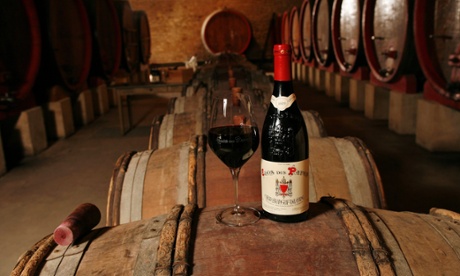Wine producers reduce the alcohol to meet more sophisticated palates
The increasing popularity of good quality lower-alcohol whites and reds has led to calls for wine to be taxed accordingly.
In Australia we live not only under the Southern Cross, but also under a hefty tax on wine. About 40% of the cost of a bottle of wine is tax, thanks to a combination of GST and the wine equalisation tax – equal to 29% of the wholesale price. So on an expensive bottle, the tax may be a very considerable sum.
So it’s unsurprising that the idea of taxing wine according to its alcohol content – which is how spirits and beer are taxed – is gaining increasing traction, with new calls for an overhaul this week. Aside from potentially increasing revenue and reducing alcohol consumption, the move would make both high-end and lower-alcohol wines more affordable.

Châteauneuf-du-pape: high-alcohol rating is going out of fashion.
Australian drinkers have been moving away from the big reds and buttery chardonnays and towards more elegant, refined – and lower-alcohol – wines for some time. These finer boned wines are able to express a sense of place more readily than those with extremely ripe fruit and deafening concentration.
Lower-alcohol reds are often less voluminous, less rich, but they offer more spice, a tighter palate and more perfume. The new wave of Barossan red, for instance, is reducing the hang time of the grapes and delivering wines that can refresh and enliven.
White wines are also beginning to be more playful. There is a move to juggle the balance of sugar and acid in riesling, and make chardonnay more piercing and focused. Australian semillon has remained lower in alcohol, and whites such as vermentino and some pinot grigio are bringing greener fruit and truly crisper wines. We are starting to embrace acidity on a whole new level.
At the cheaper end of the scale, the reds tend to be sweet and sparkling. White wines tend to have two expressions, those with residual sugar and those without: these wines have fermented to dryness and are racy and very fine indeed.
This move towards lower alcohol wines is due to drinkers’ evolving palates and a desire for clearer heads in the morning – and the evening for that matter. But it is also driven by buyers in the trade, seemingly searching endlessly for the bottle that best emulates the greats from the old world, famous for lower alcohol.
Of course, hefty reds can be seen in amarone wine of the Veneto, and let’s not forget our Gallic friends in Châteauneuf du Pape, where 15% alcohol is not uncommon. One might argue that as Australian wine is becoming lighter, many reds from Europe are becoming more alcoholic.
Here’s a snapshot of Australian wines with lower alcohol: no more than 11% for whites and 12.5% for reds.
Dalzotto Pucino Prosecco, King Valley, Victoria, 10.5% – $21.99
Many prosecco fall into the sub-11% category and this is bright and delicately perfumed: talc, stone, apples and barley sugar. I’m sure this has some residual sugar, but it’s almost imperceptible. It is crisp, floral and bright.
2012 Sinapius Riesling, Pipers River, Tasmania, 9% – $28
Sweet riesling is indeed one of the great thrills of the wine world. This has sweetness as the wine hits your mouth, before the acid brings things back in line.
2012 Brokenwood Semillon, Hunter Valley, NSW, 10.5% – $20
With racy acidity and delicate fruit notes, this is a zesty wine that tastes of apples, nougat, fresh herbs and stones. It’s delicious and fresh, and screams of its grape variety.
2004 Tahbilk 1927 vines Marsanne, Nagambie Lakes, Victoria, 11% – $40.45
Perhaps one of the greatest ageing wines in the country, Tahbilk rarely disappoint. Still pale in colour, the nose is all about apples, nougat, faint honey and citrus. I’d challenge anyone to guess this was nearly 10 years old. The palate is delicate and refined and quite savoury.
2010 Grant Burge Dolcetto Syrah, 11% – $8.90
This has bubbles in it. It’s sweet and plummy with dried fruitcake notes and super ripe black cherries. Would work well with spicy food such as a beef curry.
2012 Brown Brothers Cienna, 7.5% – $12.35
Also bubbly, the cienna is lighter in colour than the Grant Burge, and on the nose it could be a northern Italian red. The palate is all confectionary raspberry and warm spices such as cinnamon.
2009 Chalmers Aglianico, Mildura, 12.5% – $30
This is more complex and earthy. Red fruits, fresh acidity and lightness of palate with long, fine tannins.
Source: The Guardian, 31 October 2013







